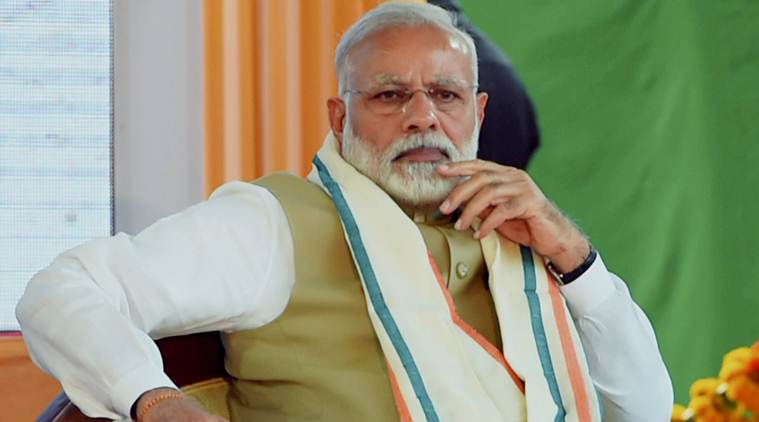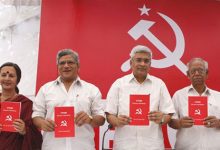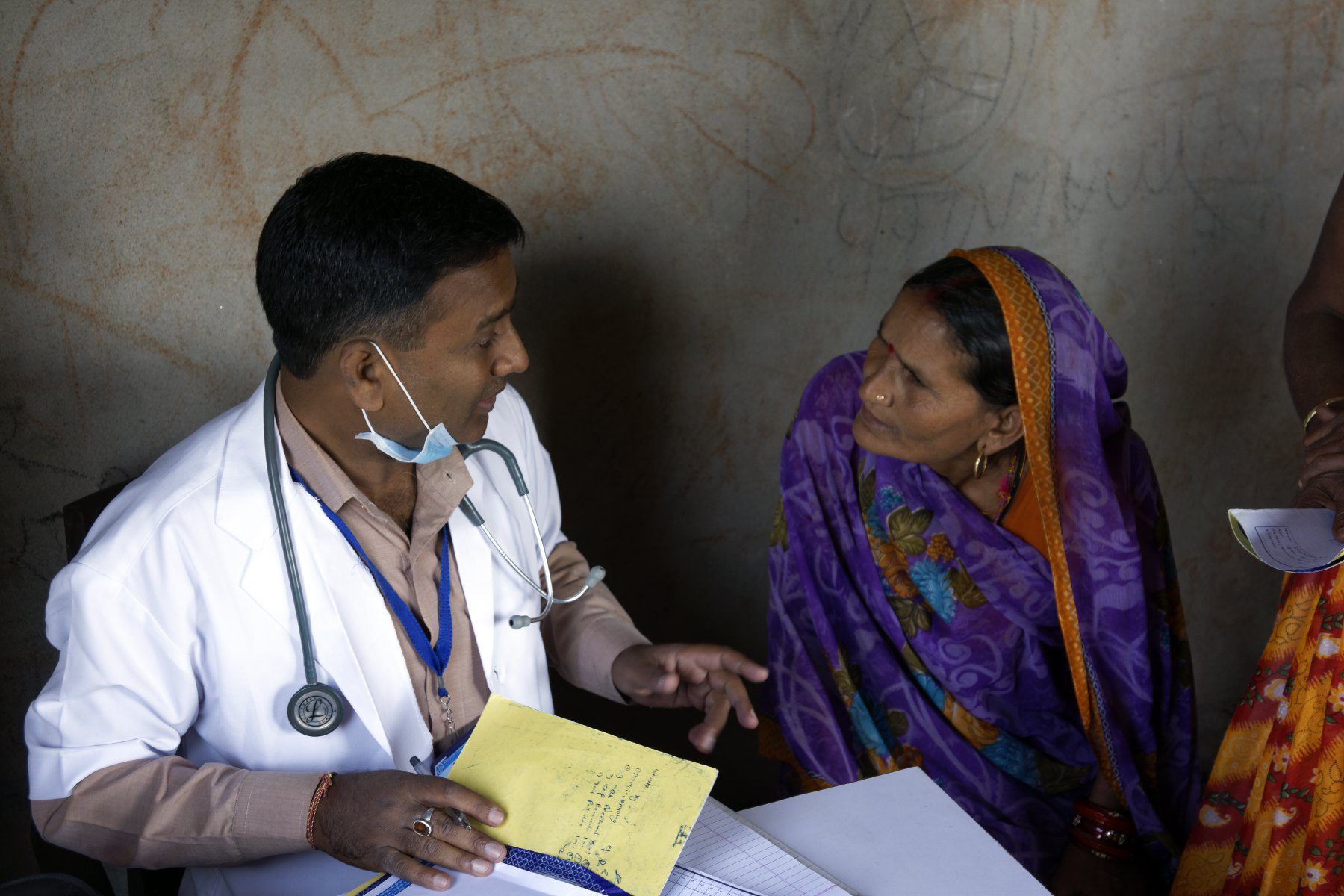Finance Minister Arun Jaitley, presenting his fifth budget, has not refrained from creating hostages to political fortune. With elections to as many as eight assembly states due this year before the mega general election in 2019, the ambivalence to have one foot on the much-trodden welfare socialist path and another wobbly one on incremental measures to tax-paying community partners in progress do betray a lamentable lack of single-handed purpose to push growth. Here’s an analysis, for Different Truths.
 The interminable debate over the final full-fledged General Budget of the National Democratic Alliance (NDA) headed by Narendra Modi apart, the 2018-19 budget belied the credo of the Modi government as market-friendly and growth-focused. This is palpably obvious as the feisty Finance Minister Arun Jaitley, presenting his fifth budget, has not refrained from creating hostages to political fortune. With elections to as many as eight assembly states due this year before the mega general election in 2019, the ambivalence to have one foot on the much-trodden welfare socialist path and another wobbly one on incremental measures to tax-paying community partners in progress does betray a lamentable lack of single-handed purpose to push growth, come hell or high-water. If only the government believed in its own manifesto-mantra of minimum government and maximum governance, this budget-makers would not have littered the doing business in India efforts with a menacing number of fiscal proposals to render the already high-cost domestic economy an intractable terrain to operate both for domestic as well as overseas investors. At a time when the Prime Minister himself railed against recrudescence of protectionism in the global economy at the influential WEF in Davos recently, the Indian authorities had hiked the customs duty on a range of goods sans bothering to cut to size the intriguing range of as many as 19 customs duties extant in the statute! The gap between articulation and action can seldom be so wide as in this case, which is bound to hurt our image to sit on the high table of global institutions on equal terms!
The interminable debate over the final full-fledged General Budget of the National Democratic Alliance (NDA) headed by Narendra Modi apart, the 2018-19 budget belied the credo of the Modi government as market-friendly and growth-focused. This is palpably obvious as the feisty Finance Minister Arun Jaitley, presenting his fifth budget, has not refrained from creating hostages to political fortune. With elections to as many as eight assembly states due this year before the mega general election in 2019, the ambivalence to have one foot on the much-trodden welfare socialist path and another wobbly one on incremental measures to tax-paying community partners in progress does betray a lamentable lack of single-handed purpose to push growth, come hell or high-water. If only the government believed in its own manifesto-mantra of minimum government and maximum governance, this budget-makers would not have littered the doing business in India efforts with a menacing number of fiscal proposals to render the already high-cost domestic economy an intractable terrain to operate both for domestic as well as overseas investors. At a time when the Prime Minister himself railed against recrudescence of protectionism in the global economy at the influential WEF in Davos recently, the Indian authorities had hiked the customs duty on a range of goods sans bothering to cut to size the intriguing range of as many as 19 customs duties extant in the statute! The gap between articulation and action can seldom be so wide as in this case, which is bound to hurt our image to sit on the high table of global institutions on equal terms!
 For a high-cost domestic economy battling with the distinct slowdown, triggered off by the twin policy measures of demonetisation of high denomination notes in November 2016 and the ill-prepared roll-out of the Goods and Services Tax (GST) from July 1, 2017, the budget contained, as wonted in a pre-election year, a spate of steps for the agricultural and rural sectors, a new unfunded health insurance scheme for the poor and insubstantial reliefs in income tax by way of re-introduction of ‘standard deduction’ pegged at Rs 40,000 and tax saving benefits to senior citizens, who in any case do not play an active part in the economy, having slogged decades to savour the affordable small pleasures of life. But the youthful sections of the widely-claimed demographic dividends and the swathe of the middle-class people who trundle along notwithstanding, all the burdens imposed on them do deserve a whiff of relief, which the budget is miserably bereft of.
For a high-cost domestic economy battling with the distinct slowdown, triggered off by the twin policy measures of demonetisation of high denomination notes in November 2016 and the ill-prepared roll-out of the Goods and Services Tax (GST) from July 1, 2017, the budget contained, as wonted in a pre-election year, a spate of steps for the agricultural and rural sectors, a new unfunded health insurance scheme for the poor and insubstantial reliefs in income tax by way of re-introduction of ‘standard deduction’ pegged at Rs 40,000 and tax saving benefits to senior citizens, who in any case do not play an active part in the economy, having slogged decades to savour the affordable small pleasures of life. But the youthful sections of the widely-claimed demographic dividends and the swathe of the middle-class people who trundle along notwithstanding, all the burdens imposed on them do deserve a whiff of relief, which the budget is miserably bereft of.
For the manufacturing industrial sector, the extension of corporate tax of 25 percent made to micro, small and medium enterprises (MSMEs) with turnover of less than Rs 50 crore in 2017 budget to companies with turnover up to Rs 250 crore now meant to benefit the entire class of MSMEs, which account for almost 99 per cent of companies filing their tax returns. Now, only about 7,000 companies out of about seven lakh filing returns of incomes with turnover above Rs 250 crore would be in the vexatious 30 per cent slab. The moot point is that for the big corporate houses employing a battalion of the workforce and invested heavily and to stay invested in future, the anticipated relief in high corporate tax has failed them this time around too with a mere sardonic assurance from Jaitley that they would not remain so forever!
Even as cess and surcharges are superimposed on extant direct and indirect taxes to make the burden onerous over the years, this budget has done its bit to keep it that way to the dismay of taxpayers, both individuals as also industries. Thus personal income tax and corporate taxpayers who paid 2 per cent for primary education and one per cent less for secondary and higher education would now pay one per cent more for meeting the health needs of poor, taking the health and education cess to 4 percent. At a time when mobile phones are widely used in the country, the hike in customs duty on mobile phones from 15 to 20 per cent and on some of their parts and accessories to 15 per cent and on certain parts of televisions to 15 per cent is going to hurt consumers, though the ostentatious objective is to encourage domestic manufacturing. It is also regressive to levy a surcharge at 10 per cent of the aggregate duties of customs by way of a social welfare surcharge, which might hurt all import-dependent export production units to render their cost prohibitive.
The reintroduction of the tax on long-term capital gains (LTCG) over Rs 1 lakh made from the sale of shares at 10 per cent on the ground that the return on investment in equity is already quite attractive without tax exemption is viewed as baloney by markets, which spooked the day after the budget! While the authorities justify this as a small price to be ignored by investors as is the norm elsewhere, it remains an open question as to how this would impact on more business surpluses being invested in financial assets and the players in the bourses for the equity culture to take firm roots.
 For the farm sector, there is the munificent move to peg minimum support prices (MSP) for khariff crops at 1.5 times the cost of produce for such crops .How this is going to be funded is not disclosed. It may be noted that the Ashok Dalwai Committee set up to look at ways of doubling farmers’ income by 2022, a pledge made in budget 2016-17, reckons that the government would need to spend an additional Rs 6.40 lakh crore to deliver on its promise! By this yardstick, the MSP hike proposed and the enhanced budgetary allocation for agriculture and agricultural credit would in no way be nearer the tall objective. The 100 per cent tax deduction to companies registered as farmer producer companies with annual turnover up to Rs 100 crores in respect of profit derived from such activities for a span of five years from fiscal year 2018-19 would help huge agribusinesses than isolated poor farmers or a group of farmers who find the farming undertaking strenuous in the absence of supportive steps to sustain their zest to stay in farming. The high debt burden, the exorbitant cost of inputs such as nutrients and quality seeds and lack of able hands in farming for hire all obstruct even land-owners from ably exploiting their lands. It is small wonder tinsel world stars and corporate honchos buy farmlands in bulk to raise farmhouses to stay exhilarated even as our kisans toiling against the excruciating elements of nature bravely remain mired in misery and debt stoically with little support from the authorities.
For the farm sector, there is the munificent move to peg minimum support prices (MSP) for khariff crops at 1.5 times the cost of produce for such crops .How this is going to be funded is not disclosed. It may be noted that the Ashok Dalwai Committee set up to look at ways of doubling farmers’ income by 2022, a pledge made in budget 2016-17, reckons that the government would need to spend an additional Rs 6.40 lakh crore to deliver on its promise! By this yardstick, the MSP hike proposed and the enhanced budgetary allocation for agriculture and agricultural credit would in no way be nearer the tall objective. The 100 per cent tax deduction to companies registered as farmer producer companies with annual turnover up to Rs 100 crores in respect of profit derived from such activities for a span of five years from fiscal year 2018-19 would help huge agribusinesses than isolated poor farmers or a group of farmers who find the farming undertaking strenuous in the absence of supportive steps to sustain their zest to stay in farming. The high debt burden, the exorbitant cost of inputs such as nutrients and quality seeds and lack of able hands in farming for hire all obstruct even land-owners from ably exploiting their lands. It is small wonder tinsel world stars and corporate honchos buy farmlands in bulk to raise farmhouses to stay exhilarated even as our kisans toiling against the excruciating elements of nature bravely remain mired in misery and debt stoically with little support from the authorities.
Finally, fiscal hawks might howl in protest the willful slide in the fiscal glide path by postponing the fiscal consolidation process so painstakingly built by this government since 2014-15 to 3.5 per cent in 2017-18 and 3.3 per cent of GDP for the next year. This will only exacerbate the massive borrowing programme of the government as the bond markets detest fiscal slippage. At a time when inflation demon is rearing its ungainly head once again, abetted by the spurt in crude oil prices and food inflation and the high cost of government borrowing, the entrenchment of inflationary forces is bound to bother aam aadmi for whom the budget is shorn of any succor. Private investment and animal spirit of entrepreneurs might have to wait patiently for more favourable winds to blow!
P. Srinivasan
©IPA Service
Photos from the Internet
#AamAadmi #Farmers #EconomyOfIndia #Agribusiness #PrimeMinister #Budget #IndianBudget #IPA #DifferentTruths






 By
By
